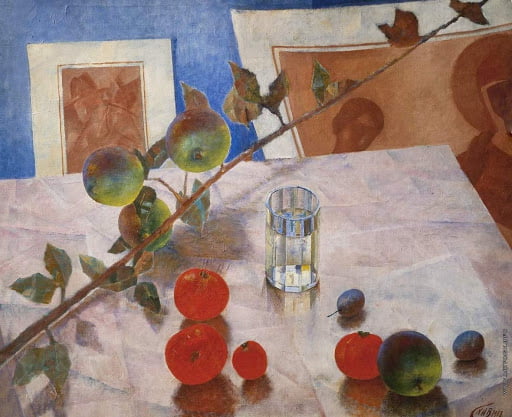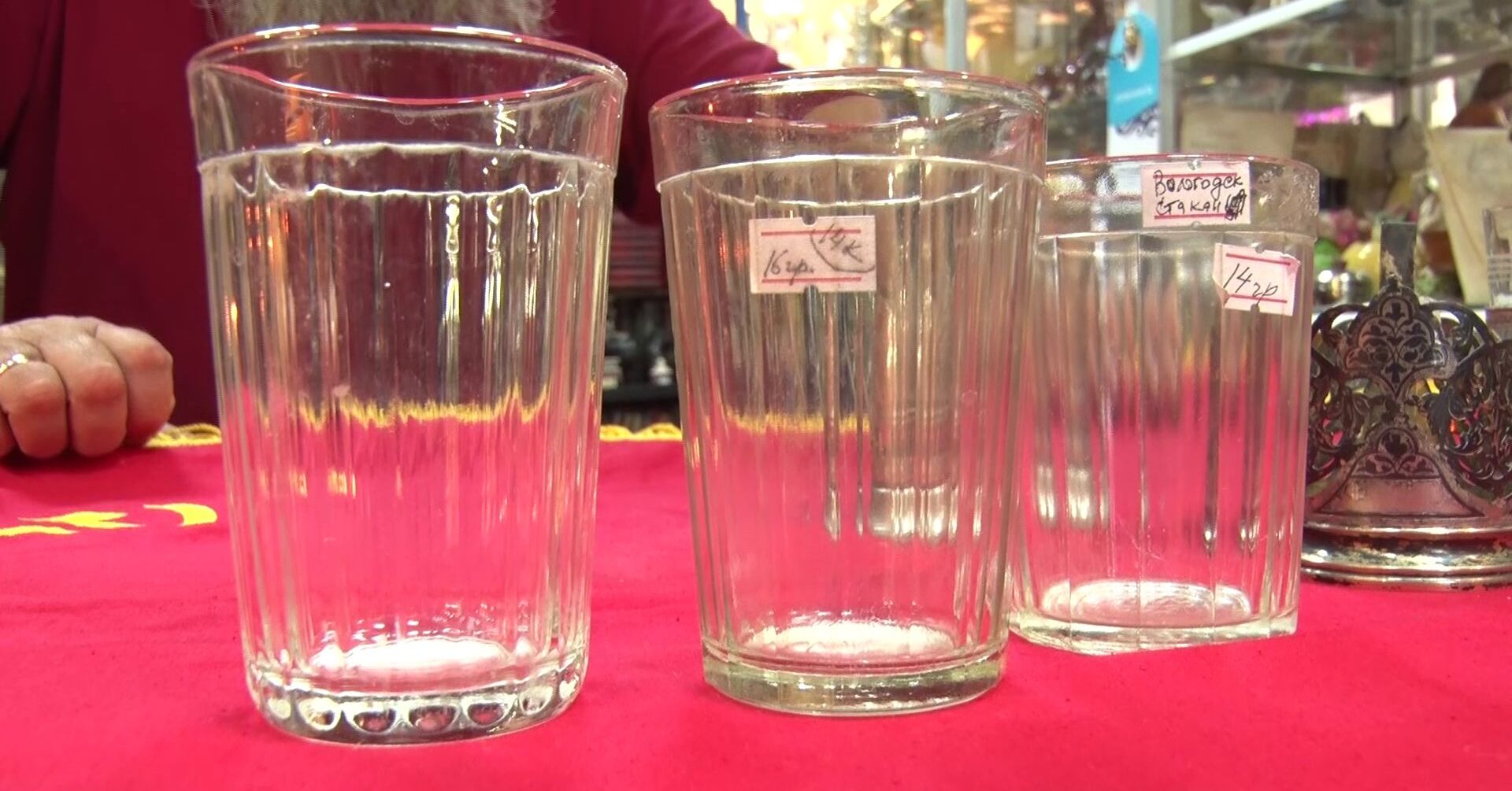It is believed that the design of the iconic attribute of Soviet life was developed by the famous sculptor Vera Mukhina. We checked whether this is actually true.
Although the most famous work Vera Mukhina - the monumental “Worker and Collective Farm Woman” at VDNKh and several monuments in Moscow, many are grateful to her for creating faceted glasses that could be found in any Soviet canteen, restaurant or in an ordinary home kitchen. Internet users not only thank the sculptor for the design she developed, but also mention legends associated with the product: for example, the edges supposedly symbolize the Union republics, and the rim symbolizes the Russia that unites them. Similar messages can be found, in particular, in "VKontakte", Twitter And Facebook. They play up this “fact” in fiction. The author of the book “100 Famous Symbols of the Soviet Era” declaresthat the faceted glass was invented by Mukhina together with Kazimir Malevich in 1943 in Sverdlovsk.
The faceted glass definitely existed before Mukhina allegedly took up the design. For example, in 1918–1924 Kuzma Petrov-Vodkin wrote several still lifes depicting these glass products. How reported Violetta Mikitina, head of the ceramics and glass department of the Kuskovo Museum, some craftsmen made faceted glasses at the turn of the 18th and 19th centuries; they were exquisitely designed and significantly different from the ones we are used to.
There is a widespread belief that cut glasses appeared in Russia under Peter I. Allegedly, master Efim Smolin even gave such a glass to the king, assuring that it was so durable that it would not break if dropped. Peter I approved the idea, and later faceted glasses became produce at the Maltsov factory on the Gus River - later the city of Gus-Khrustalny will appear here. At the same time, the curator of the glass collection of the Crystal Museum named after. Maltsov Alla Chukanova calls distinguish between pre-revolutionary and Soviet faceted glasses. The first were made by cutting, a manual process done after the glass was blown, while later examples were made by pressing. “When the Soviet glass arose, they began to call it faceted, but this is not entirely correct,” says Chukanova.

By allegations curator of the museum in Gus-Khrustalny, for a long time there was no known documentary evidence that Vera Mukhina had anything to do with the creation of a faceted glass. However, several years ago Chukanova appealed to the Vera Mukhina Museum in Feodosia, and its director reported on the memoirs of the artist Uspensky. He was part of the working group that, under the leadership of Mukhina, at the turn of the 1930s and 1940s, developed a new design for tableware at the Leningrad Art Glass Factory. Allegedly, the first Soviet dishwashers had already been created, and glasses were breaking in them - in particular, it was this problem that Mukhina and her colleagues needed to solve. At the same time, the plant in Leningrad was not so large and specialized in the production of exclusive things, so they decided to produce new standardized faceted glasses in Gus-Khrustalny. The first batch was released in September 1943.
This version seems at least more logical than the story about Mukhina and Malevich (the latter died in 1935, so he could not have participated in the developments of the early 1940s). However, it is not without problems. In particular, the museum in Feodosia positions itself as a folk one - it was created by enthusiasts, which, unfortunately, does not make them experts. The mention of a dishwasher also raises questions - we were unable to find confirmation that such devices were produced for catering establishments in the USSR at that time. Some experts share this pessimism. “Whether Vera Mukhina really had anything to do with its (cut glass. - Ed.) creation is a topic that is still waiting for its researcher,” - believes Violetta Mikitina from the Kuskovo Museum.
Thus, Vera Mukhina, at best, is the author of the “rebirth” of the faceted glass, but not its creation. Moreover, apparently, several ideas of the famous sculptor and her colleagues went into production at once. Chukanova draws Pay attention to the price lists of high-quality glassware from 1939, 1941 and 1957: they describe glasses with a different number of edges, with and without a rim, intended for drinking different drinks. Therefore, the legends widespread on social networks that the edges symbolize the Soviet republics, and the rim symbolizes either Russia or the Communist Party, uniting them, are baseless.
Mostly not true
- E. Solovyova. Who actually invented the cut glass and why?
- Behind the glass. The history of cut glass from Peter I to Petrov-Vodkin
If you find a spelling or grammatical error, please let us know by highlighting the error text and clicking Ctrl+Enter.







